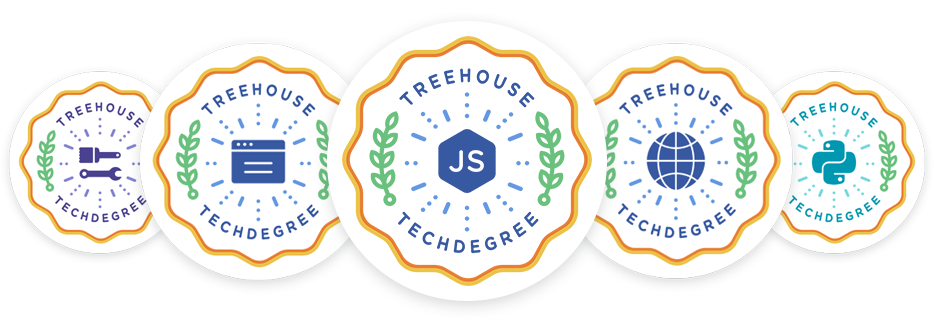Question: What is the most important skill needed for a UX Designer to be effective today?
- High-fidelity prototyping wizardry
- Strong visual design chops
- Knack for removing the inessential
- Fluency in HTML/CSS/Javascript/React
Answer: None of the above.
The most important skill, from my experience, is a toolbox of certain “soft” skills. Specifically:
- Empathy
- Common Sense
- Negotiation and Diplomacy
Because being a good designer is not the same as being an effective designer.
Being an effective designer means more than just creating great designs for the user. You need to learn to create the right design for your users and your team. Over time the effective designer learns to evaluate their work not by the quality of their design, but by the impact of what actually ships. That’s what makes the effective designer valuable, because a great design that sits on the shelf doesn’t solve real problems.
Most experienced designers who work on teams have learned along the way that their job involves a lot more than just creating designs. Design work typically needs to be approved by stakeholders on the business side and achievable in a tight timeline by the developers who will be implementing it.
As a junior designer it can be frustrating to see the fruits of your hard work being compromised for the sake of time constraints or crippled by technical limitations. It’s tempting to throw your hands up when this happens and say “Well, I did my job” and grumble about the lack of support and abilities of the other roles on the team.
But experienced designers play the long game and know that a series of small wins can beat a drawn-out battle towards a single big win.
The following practicable skills can be invaluable in getting your ideas and hard work into the end product.
Contents
1. Empathy: Not just for end users
Empathy is a word that UX designers love to own. We “feel” for the user, we know their pain, we walk in their shoes, yet we know that we are not the user. We use this as leverage in many of our design arguments. But can’t we also feel for the members of our team? If the business can’t sell our product, we’re out of a job. And if the developers can’t build it, ditto.
UX Designer Caroline Sober-James advocates for a “reaching across the aisle” approach with developers in “How to Write UX Specs That Make Developers Swoon” (you can watch a video here).
It starts by acknowledging that designers and developers have a common goal: to deliver a great product to the customer. But things go awry as soon as someone on one or both sides mutters “they just don’t get it.” Why, as designers, can’t we “get it?”
It begins with understanding the role and tasks of those we rely on and by following these three steps:
- Put your ego on the shelf
- Swallow your pride
- Focus on the big picture
A fantastic way to bring someone over to your side is to ask for help. This creates a shared investment in the outcome. Another trick is to pitch yourself as someone who can make their job easier, relieving them of mundane decisions like what kind of UI control to use or what labels should say.
By trying to understand better what the other members of the team do, you can better position yourself as someone who shares their interests and goals, for the sake of a better overall product.
2. Common Sense: Don’t be afraid to be boring
As the advocate for the user, your role is to clear through the clutter of edge-case feature requests and technological playgrounds to provide a clean picture of what the user really wants.
“Choose obvious over clever every time,” writes Cap Watkins in “The Boring Designer.” As a design team leader, Cap values designers who don’t feel the need to put their personal mark or flourish on their product, who recognize that time and budget constraints may limit what they can deliver, and who prioritize accordingly.
In my own experience, “Wouldn’t it be cool if…?” conversations are red flags that indicate that the upcoming discussion could lead down the wrong path (not always, of course). Just because you’re excited about something doesn’t mean it’s what the user wants or needs. For example, don’t be afraid to endorse an existing, “boring” framework like Bootstrap if it helps with consistency and gets the product out the door faster. Users want real solutions ahead of “delight.”
Bad design comes from products that try to be everything to everyone or that are built as portfolio material for their designers. Help keep your team grounded by bringing discussions back to the problems you initially set out to solve.
3. Negotiation and Diplomacy: Own the design
As a designer, your goal should be to own the design from concept all the way through to implementation. That is the ultimate realization of your role as the designer.
Owning the design means that you’re responsible for what ships. It’s your job to see it through to completion. If it’s hard to use, that’s on you. If it’s ugly, that’s on you. If it doesn’t meet customer needs, that’s right, on you. It’s a big weight, but that’s the cost of ownership. But owning it doesn’t mean forcing it on the rest of the team. If you make their jobs harder they won’t want to work with you. You need a delicate touch and a team-first mentality.
It won’t be easy. You will encounter pushback along the way. You will feel at times that the other people on your team are your adversaries rather than your allies, but you can’t let yourself get sucked into that binary way of thinking. A successful launch means that everyone feels that they participated in the process. The effective designer brings people together.
The smartest way to avoid “us vs. them” conversations when it comes to your design is to frame discussions and decisions as tradeoffs. Tradeoffs say, “Sure, we can do that, but here’s what will happen if we do…” Tradeoffs align goals and get everyone on the same page, as opposed to debates, which result in a winner and a loser.
If they want to ship it without a critical piece, you need to make the case that the experience will be negatively affected if they do. But you also have to be able to compromise if you get a dev estimate that’s way out there. If they want to add a feature that you think is unnecessary, tell them what you think will be the result if they do (and, of course, you can use user testing to reinforce your case). Everything is a tradeoff when it comes to the end user experience. Framing things around right and wrong won’t get you very far.
Summary
The best way to make your mark as a UX Designer is to improve the experience of products that are actually used. But you can’t do it on your own. You need to trust and rely on the people you work with to get great products out the door. You can advocate for the user by advocating for your role as a designer, showing your teammates the value you provide and giving them a good experience working with you. You need your team and your team needs you, and the key to that relationship isn’t how awesome you are at Sketch or wireframing. It’s how you manage your role on the team using soft skills, skills that will help you in more than just your job.
Leon Barnard is a writer and designer at Balsamiq. He contributes to the Balsamiq UX blog and curates the Balsamiq Champions blog about how and why people use Balsamiq Mockups.








Thank you for an affirming read. I have to say that I agree with the idea that these soft skills are the fundamental tools every ux designer should look to develop. It is refreshing to have the focus taken away from the ux designer as an individual creating special work which caters exclusively for the user. I have found that my work is most appreciated when it effectively slots in to the bigger picture both for the rest of the team, the project and the client (if there is one) rather than producing a series of stand alone ‘knock out’ wireframes or sketches for example. Figuring out how you can better connect with the work that the whole team is doing is most definitely one of my favourite parts of practicing as a ux designer.
Great points, Lizzi. Trying to keep your work relevant to the larger team is incredibly important.
Agree with you Mary – going “into a zone” can often lead to negative outcomes as communication is killed off. It’s all about balance.
You have wonderful insight Lizzi. You always have to keep your work relevant and organised especially if its a large team. This will ensure the success of the business in the long term.